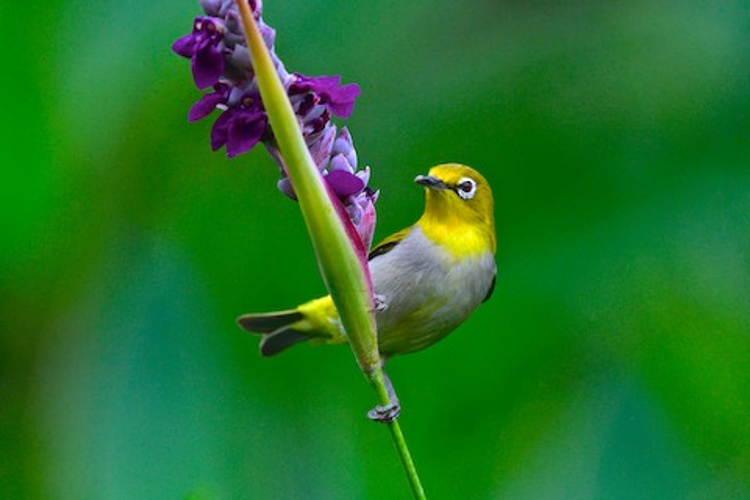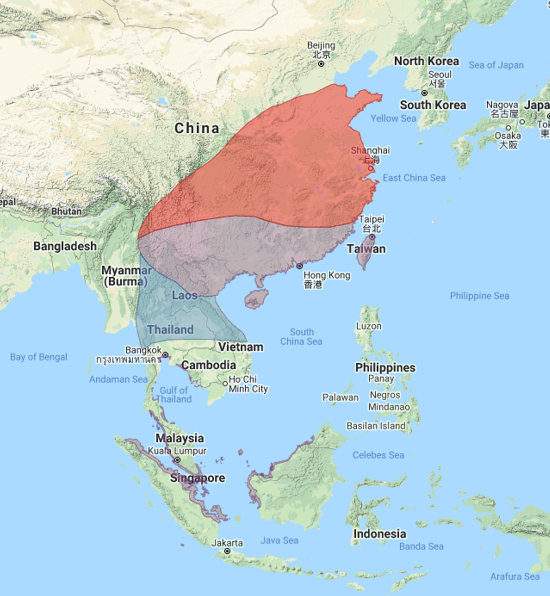Birdfinding.info ⇒ The Chinese form is widespread and common across much of eastern China and Taiwan, including urban parks in cities such as Hong Kong and Taipei. This form is also common and increasing in southern California from Los Angeles to San Diego. The ecologically distinct “Williamson’s” form is locally common from central Thailand to Sumatra and Borneo in certain habitats, especially mangroves. Accessible locations where it can be found reliably include Bangkok (e.g., Bang Pu Recreation Center) and Singapore.
Swinhoe’s White-eye
Zosterops simplex
Family: Zosteropidae
East Asia south to Sumatra and Borneo.
Northern populations thrive in brushy woodlands of all kinds, from forests to urban gardens. Southern populations inhabit coastal forests of the humid tropics, some are effectively limited to mangroves.
Disjunct distribution combines populations that were formerly classified under three species—Japanese, Oriental, and Enggano White-eyes—which have been reclassified based on studies of genetics, vocalizations, and other factors. The distinction is perhaps best preserved in part by regarding them as potentially distinct forms:
“Chinese White-eye” (simplex and hainanus): two subspecies that breed throughout much of central and eastern China, north to Hebei, Shanxi, and southern Gansu, west to eastern Myanmar, and south to northern Laos, Vietnam. Also on Taiwan and Hainan.
Northern populations are migratory, withdrawing from the northern third or so of the breeding range, and wintering south to southeastern Myanmar, central Thailand, and central Vietnam.
An introduced population is well-established and spreading in southern California. As of 2020 it was present from Malibu to Tijuana.
“Williamson’s White-eye” (williamsoni and erwini): two subspecies that primarily occupy coastal habitats—especially mangrove forests—locally from the Gulf of Siam south along both coasts of the Malay Peninsula to the northwestern coast of Borneo and southern Sumatra. Also in some interior lowland forests of the southern Malay Peninsula and Sumatra.
“Enggano White-eye” (salvadorii): endemic to Enggano Island southwest of Sumatra.
Identification
A small, active, noisy songbird, mostly olive with the bold white-eyering typical of most Zosterops.
The upperparts are mostly yellowish-olive, usually pure-yellow on the forehead. In general, the upperparts coloration averages brighter than that of the Warbling White-eye and duller than Indian White-eye.
The underparts are mostly gray with a lemon-yellow throat and undertail coverts. Sometimes shows a yellowish wash along the midline of the underparts.

Swinhoe’s White-eye. (Taipei Botanical Garden, Taipei, Taiwan; November 13, 2019.) © Jared Keyes
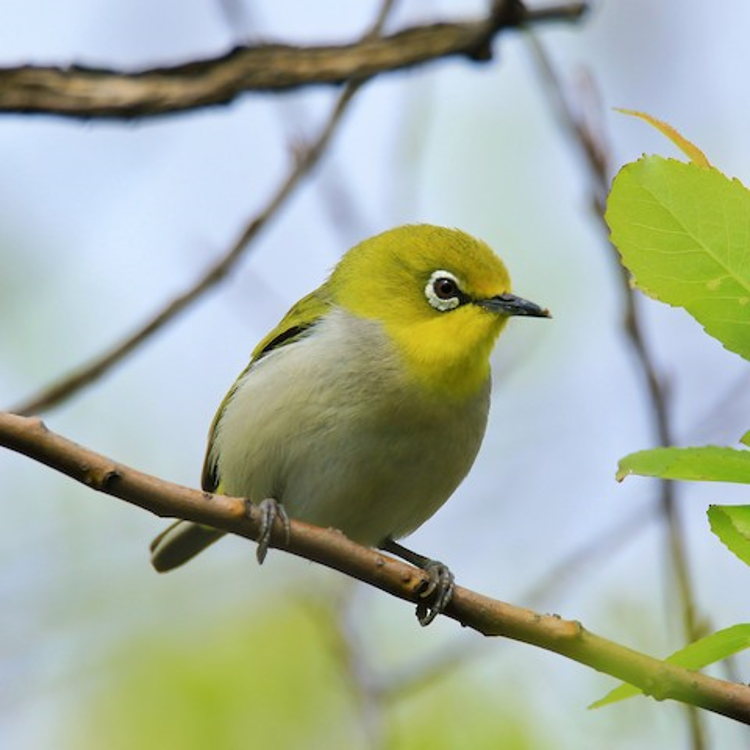
Swinhoe’s White-eye. (Shulin Lujiaoxi Wetland, New Taipei City, Taiwan; January 31, 2016.) © Poshien Chien

Swinhoe’s White-eye. (Da’an Forest Park, Taipei, Taiwan; March 13, 2019.) © Jerry Ting
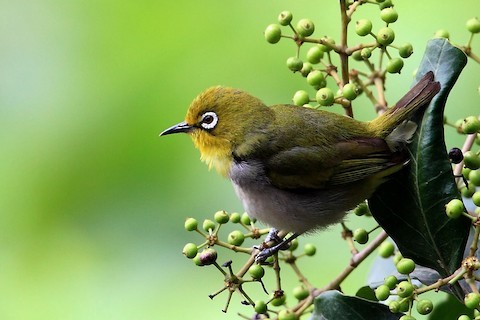
Swinhoe’s White-eye. (Hong Kong Wetland Park, Hong Kong; February 18, 2012.) © William Ip

Swinhoe’s White-eye. (Lianhuashan Park, Guangdong, China; December 9, 2019.) © Chris Thomas
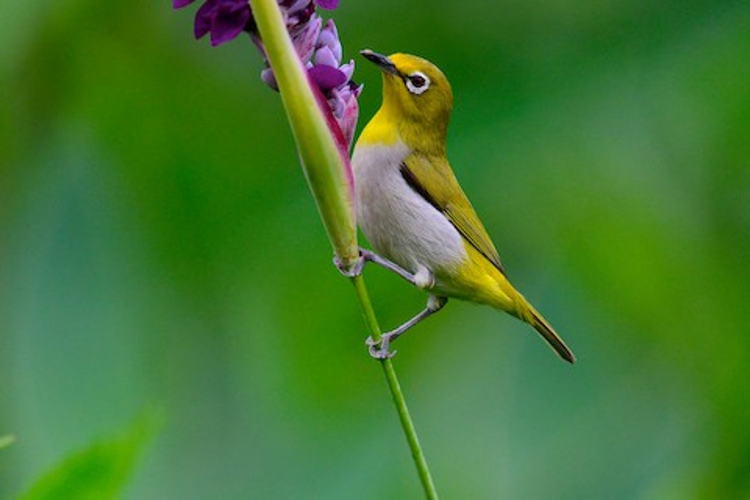
Swinhoe’s White-eye. (Taipei Botanical Garden, Taipei, Taiwan; May 11, 2018.) © Cheng Ching Lu

Swinhoe’s White-eye. (Yung’an Wetland, Kaohsiung City, Taiwan; January 5, 2020.) © Liu Jyun-Fu
According to some identification references written before the taxonomic revision of Zosterops, the geographically separate forms that have been classified together as Swinhoe’s White-eye vary somewhat in the brightness of their plumage. If so, it is doubtful that any such differences are pronounced or consistent enough to distinguish them based solely on visual appearances.

Swinhoe’s White-eye. (Madrona Marsh, Los Angeles, California; May 28, 2020.) © Kevin Kosidlak
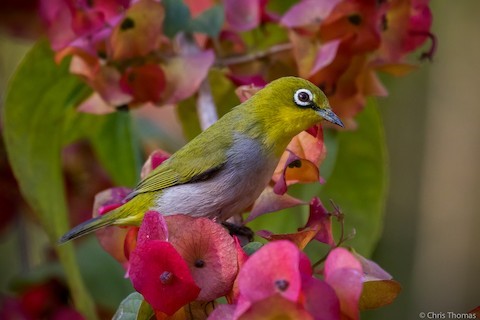
Swinhoe’s White-eye. (Lianhuashan Park, Guangdong, China; December 9, 2019.) © Chris Thomas
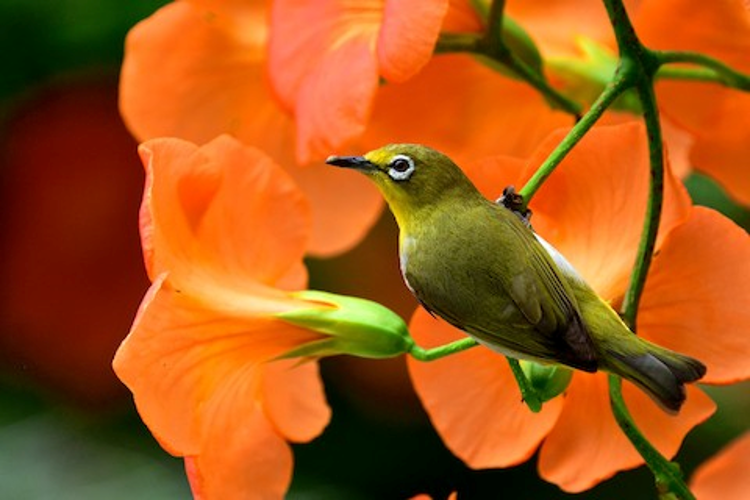
Swinhoe’s White-eye. (Taipei Botanical Garden, Taipei, Taiwan; May 11, 2018.) © Cheng Ching Lu
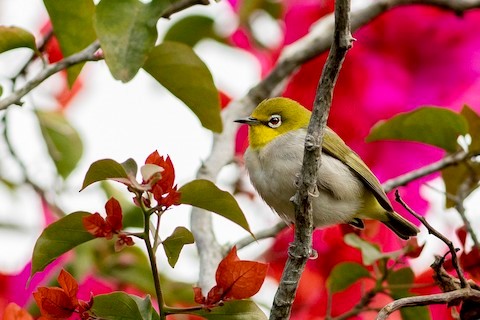
Swinhoe’s White-eye. (Taichung Metropolitan Park, Taiwan; January 29, 2020.) © Jared Keyes
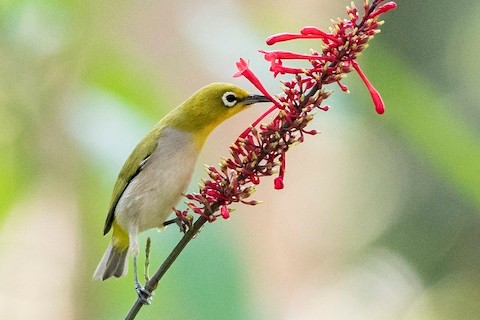
Swinhoe’s White-eye. (Taipei Botanical Garden, Taipei, Taiwan; November 13, 2019.) © Jared Keyes
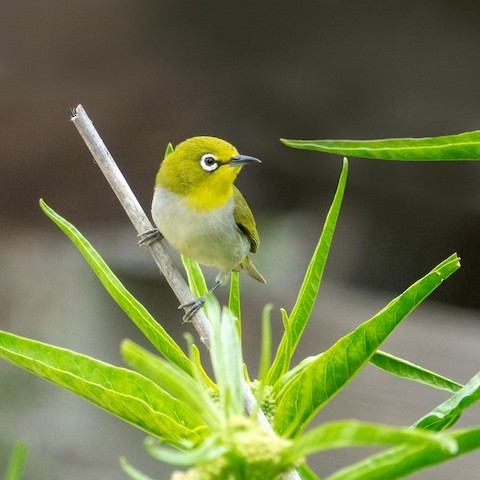
Swinhoe’s White-eye. (William R. Mason Regional Park, Irvine, California; April 25, 2018.) © Rhonda Howard

Swinhoe’s White-eye. (IRWD San Joaquin Marsh & Wildlife Sanctuary, Irvine, California; November 4, 2016.) © Jeff Bray

Swinhoe’s White-eye. (IRWD San Joaquin Marsh & Wildlife Sanctuary, Irvine, California; November 4, 2016.) © Jeff Bray
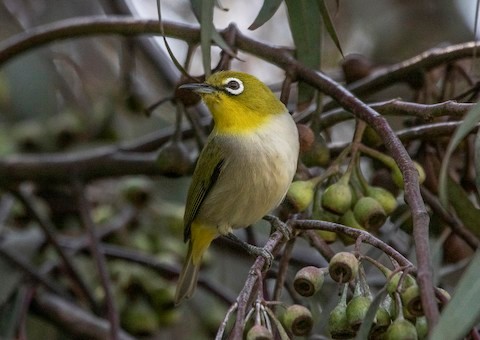
Swinhoe’s White-eye. (Westchester Park, Los Angeles, California; April 2, 2019.) © Javier Vazquez
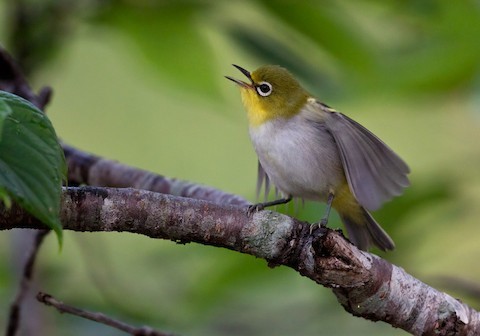
Swinhoe’s White-eye. (Zhuqi Dingbenzai Camping Area, Chiayi County, Taiwan; May 6, 2017.) © Lars Petersson

Swinhoe’s White-eye. (Doi Inthanon National Park, Chiang Mai, Thailand; January 2, 2019.) © Wich’yanan (Jay) Limparungpatthanakij
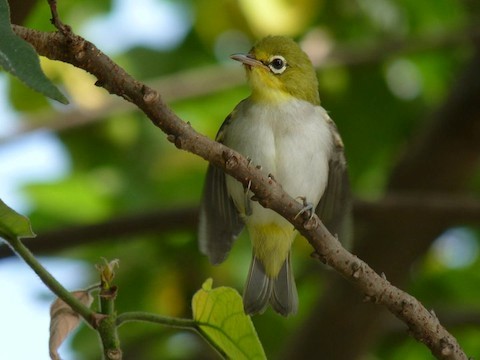
Swinhoe’s White-eye. (Taoyuan City, Taiwan; July 16, 2010.) © Ting-Wei Hung
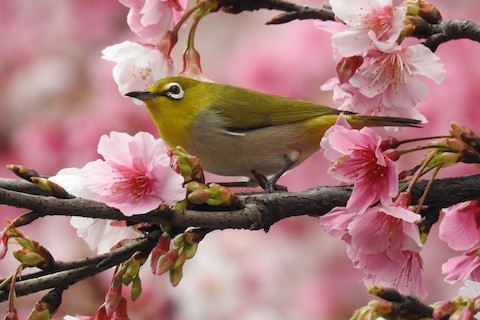
Swinhoe’s White-eye. (Taipei, Taiwan; February 21, 2018.) © Arlango Lee

Swinhoe’s White-eye. (Taipei Botanical Garden, Taipei, Taiwan; May 11, 2018.) © Cheng Ching Lu
Compared to the widespread migratory “Chinese” form, the coastal resident “Williamson’s” form may tend to have slightly duller-olive (less yellow) upperparts and more extensive yellow on the underparts, but any such differences among the populations would be very difficult to detect.
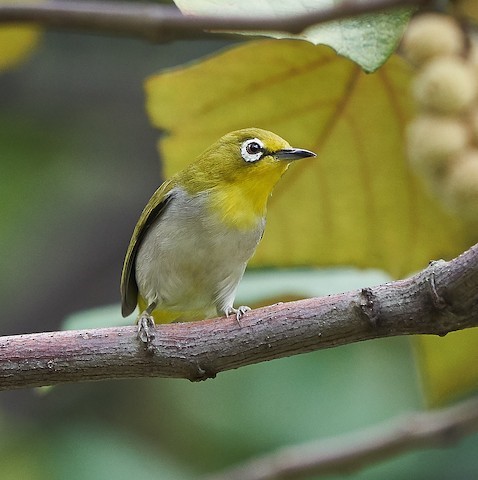
“Williamson’s White-eye”, Z. s. erwini. (Satay by the Bay, Singapore; December 15, 2018.) © Steven Cheong
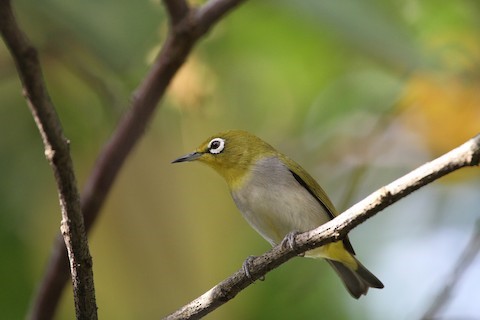
“Williamson’s White-eye”, Z. s. erwini, showing yellowish wash on midline of underparts. (Satay by the Bay, Singapore; November 4, 2017.) © Koji Ichiyama
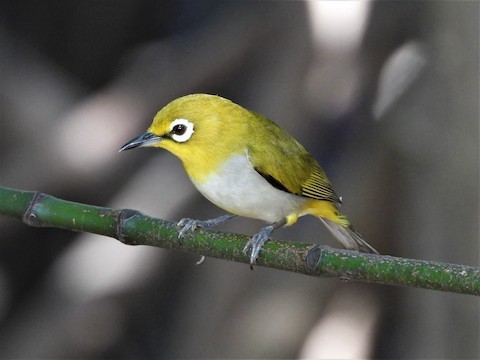
“Williamson’s White-eye”, Z. s. williamsoni. (Bang Pu Recreation Center, Samut Prakhan, Thailand; May 20, 2020.) © Ben Weil

“Williamson’s White-eye”, Z. s. williamsoni. (Bang Pu Recreation Center, Samut Prakhan, Thailand; March, 2020.) © Mark Stevenson

“Williamson’s White-eye”, Z. s. erwini. (Kranji Marsh, Singapore; August 30, 2018.) © Steven Cheong
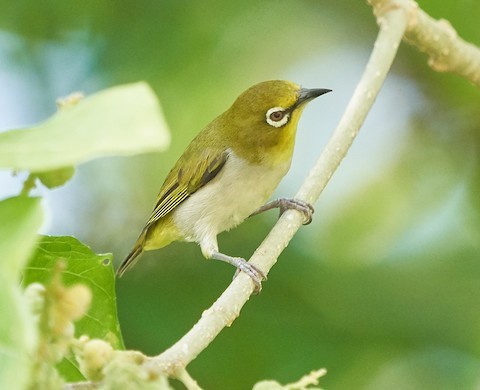
“Williamson’s White-eye”, Z. s. erwini. (Kranji Marsh, Singapore; August 30, 2018.) © Steven Cheong

“Williamson’s White-eye”, Z. s. williamsoni. (Bang Pu Recreation Center, Samut Prakhan, Thailand; October 7, 2020.) © David Diller
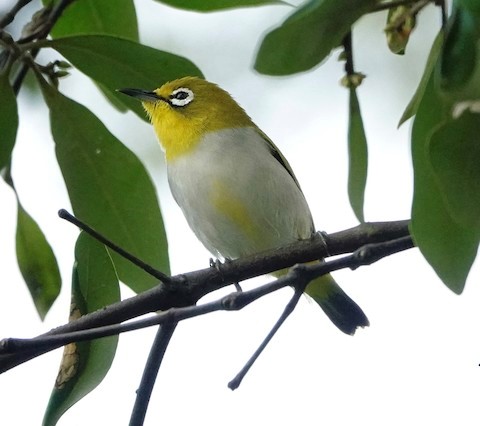
“Williamson’s White-eye”, Z. s. williamsoni, showing yellowish wash on midline of underparts. (Bang Pu Recreation Center, Samut Prakhan, Thailand; October 7, 2020.) © David Diller
Cf. Warbling White-eye. Warbling and Swinhoe’s White-eyes together comprise about twenty similar-looking populations which have been classified variously under the formerly recognized species Japanese, Oriental, and Mountain White-eyes. The current classification is based largely on genetic analyses, and the races are identifiable mainly by location and voice. The northern populations of both species are migratory and their ranges approach closely enough that they likely occur together at least occasionally—especially in Taiwan, coastal China, and Korea.
The vocal differences between them seem consistent: Warbling has a harsher voice and choppier, chattery phrasing, whereas Swinhoe’s has a thinner, sweeter voice, and smoother, more relaxed delivery.
They also differ in appearance to some extent, but subtly and with significant overlap. Overall, the migratory populations now classified as Swinhoe’s (i.e., “Chinese”) are paler and more vividly colored than those classified as Warbling (i.e., “Japanese”). This distinction does not apply to the resident populations of the Philippines and Indonesia (i.e., “Williamson’s”, “Enggano”, and “Mountain”), which vary and seem to overlap widely in coloration.
“Chinese” (Swinhoe’s) tends to have yellow-olive upperparts and some yellow on the face that usually extends to the forehead, whereas “Japanese” (Warbling) has greenish-olive upperparts and yellow limited to the throat. Both “Chinese” and “Japanese” typically show a crisp boundary between the yellow throat and gray chest, but both sometimes have yellow that extends farther down onto the chest. The gray tones of the breast and also differ, at least on average, as “Japanese” often appears medium-gray or slightly brownish, whereas “Chinese” usually appears whitish-gray. (Note that both often show a faint yellowish wash on their gray underparts.)
Cf. Indian White-eye. Swinhoe’s and Indian White-eyes can be very similar and overlap widely in the hill country of southeast Asia from Yunnan to central Thailand and Vietnam. In general, Indian has much yellower upperparts—which is especially noticeable on the head because it often does not contrast with the yellow throat. However, there is some overlap between the duller Indians and the brighter Swinhoe’s, so intermediate individuals are probably not identifiable by sight alone.
Indian and Swinhoe’s differ vocally, but it is difficult to generalize because Indian has a wide repertoire. Swinhoe’s is often recognizable by its thin, sweet voice, and smooth, relaxed delivery. Indian sings in a similar tone, but it usually has strong phrasing, often with alternating rising and falling notes, whereas Swinhoe’s typically sings a series of notes with approximately the same inflection, or minor variations. Indian’s repertoire of calls is broad, including repetition of a single note and various types of chatter.
Cf. Lowland White-eye. Swinhoe’s and Lowland White-eyes are extremely similar (perhaps visually identical) and have adjacent ranges, but are not known to occur together—proof would likely have to come in the form of a recording. Lowland has a harsher, deeper voice.
Cf. Hume’s White-eye. Swinhoe’s and Hume’s White-eyes have similar coloration and overlap widely in Southeast Asia. In areas where the Swinhoe’s (i.e., “Williamson’s”) specialize in coastal habitats, it is not likely to overlap with Hume’s, but some Swinhoe’s are not strictly coastal and some are migratory so they may still occur together. The most consistent visible difference is the color of the breast and belly—Hume’s typically has more vivid and extensive yellow along the central meridian with gray on the sides.
Cf. Sangkar White-eye. Swinhoe’s and Sangkar White-eyes overlap in Sumatra and can appear similar—Sangkar is highly variable and can resemble Swinhoe’s. In general, Sangkar differs in that it does not show clear color demarcations between gray and yellow on its underparts. Its underparts vary from all-yellow to mostly grayish, whereas Swinhoe’s has a gray breast and crisply defined yellow areas on the throat and undertail.
Notes
Polytypic species consisting of five recognized subspecies, divided into three potentially distinct forms: “Chinese” (simplex and hainanus), “Williamson’s” (williamsoni and erwini), and “Enggano” (salvadorii).
“Chinese” was formerly considered conspecific with Warbling White-eye (Z. japonicus), known collectively as the Japanese White-eye (Z. japonicus).
“Williamson’s” was formerly considered conspecific with Indian White-eye (Z. palpebrosus), known collectively as the Oriental White-eye (Z. palpebrosus).
“Enggano” was formerly considered a separate species, Z. salvadorii. This might be its appropriate status, but the 2019 taxonomic review that reconfigured Zosterops concluded that it was probably too closely related to williamsoni and erwini to be considered a separate species.
References
BirdLife International. 2019. Zosterops simplex. The IUCN Red List of Threatened Species 2019: e.T155158152A155179279. https://dx.doi.org/10.2305/IUCN.UK.2019-3.RLTS.T155158152A155179279.en. (Accessed December 18, 2020.)
Brazil, M. 2009. Birds of East Asia. Princeton University Press.
eBird. 2020. eBird: An online database of bird distribution and abundance. Cornell Lab of Ornithology, Ithaca, N.Y. http://www.ebird.org. (Accessed December 18, 2020.)
Lim, B.T., K.R. Sadanandan, C. Dingle, Y.Y. Leung, D.M. Prawiradilaga, M. Irham, H. Ashari, J.G. Lee, and F.E. Rheindt, F.E. 2019. Molecular evidence suggests radical revision of species limits in the great speciator white-eye genus Zosterops. Journal of Ornithology 160:1-16.
Robson, C. 2002. Birds of Thailand. Princeton University Press.
Xeno-Canto. 2020. Swinhoe’s White-eye – Zosterops simplex. https://www.xeno-canto.org/species/Zosterops-simplex. (Accessed December 18, 2020.)
